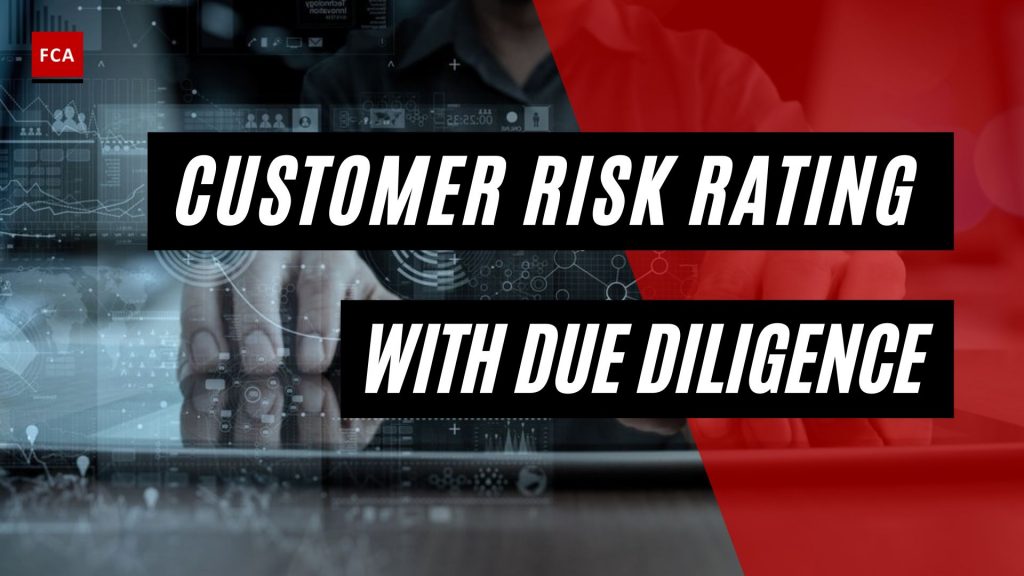Customer risk rating and customer due diligence (CDD) is a process in which an organization gathers information about a client to determine the extent to which the customer exposes it to various hazards. Money laundering and terrorist funding are two of these dangers. When two or more parties agree to do ongoing business or complete a «one-time» transaction, they develop a customer relationship.
If your initial customer and third-party vetting procedures are inadequate, you may be allowing in «bad actors» and exposing your financial institution to costly compliance and reputational risks. An integrated approach to critical Know Your Customer (KYC) and CDD workflows can improve visibility into potential financial crime risks such as money laundering and terrorist financing while also providing valuable insight into customer life events and changes.

Connecting Customer Risk Rating With Due Diligence
One of the three primary tools used by financial institutions to detect money laundering is customer risk-rating models. Most institutions’ models today are based on an assessment of risk factors such as the customer’s occupation, salary, and banking products used. When an account is opened, the information is collected, but it is rarely updated. These inputs, along with the weightings assigned to each, are used to compute a risk-rating score. However, the scores are notoriously inaccurate, frequently misclassifying thousands of low-risk customers as high risk while failing to detect some high-risk customers.
When an entity subject to money laundering legislation «enters into a business relationship» with a consumer, CDD must be used. Organization onboarding is necessary for each customer to construct a risk profile and provide a risk rating, which justifies the onboarding and aids in customer transaction monitoring.
The fundamental identifying information is submitted by potential customers at the onboarding time, which is recognized and validated by the account opening team. The client is sorted into relevant customer groups based on the identity information, such as individual, business, entity, organization, and so on. Furthermore, the customer’s risk profile is analyzed and produced depending on the customer’s knowledge and examination of the information.
Negative media searches, negative list filtering, and other searches are carried out. The account is opened once the potential customer’s history and authenticity have been established. The client is awarded a risk score or rating during the due diligence process that shows the customer’s overall risk profile. The risk profile incorporates the element of the initial assessment of money laundering and terrorist financing risks. Furthermore, the country, risk, jurisdiction risk, product risk and so on, are also assessed to develop the relevant risk profile for each identified customer.
Costumer Due Diligence
Carrying out CDD is an ongoing process, which requires the collaboration of AML and the account opening team.
Developing and linking the customer risk rating with the due diligence process aims to ensure that legitimate customers are onboarded and helps in planning periodic risk-based compliance review approaches.
Linking customer risk rating with due diligence involves consideration of the type of the customer, nature of business activities, volatility of business income, beneficial ownership structure, legal status, sources of income, products or services offered, geographical locations, and so on. The risk profile of customers shall be updated based on the changes in such information and business activities of the prospective customer and shall be the responsibility of the account opening officer of the organization to update the risk profile and records of the relevant customer in a timely basis.
Types Of KYC Risk Rating
- Low Risk (SDD- Standard Due Diligence): Organizations can use Standard Due Diligence on their Low-Risk customers. Low-risk customers pose a risk, but the odds are a million to one that a low-risk customer will harm your business. Companies can expect a significant number of their customers to be labeled as Low-Risk.
- Medium Risk (CDD – Customer Due Diligence): Organizations can use Customer Due Diligence on their Medium-Risk customers. It is an essential component of anti-money laundering compliance. CDD should be used before establishing business relationships because it eliminates potential risks. CDD checks should also be performed following a suspicious transaction.
- High Risk (EDD-Enhanced Due Diligence): Using Enhanced Due Diligence and a risk-based approach, businesses can detect high-risk customers and take the necessary steps to build business relationships. Organizations can only do business with high-risk customers if a senior manager approves it.
Customers who pose a high risk to organizations can cause harm in a variety of ways. As a result, companies should detect their customers’ risk level during customer onboarding and check them on a regular basis to ensure compliance with AML regulations.
When conducting customer checks, organizations should use up-to-date data. Sanction Scanner provides real-time data published by the United States, the United Kingdom, the United Nations, and local/global regulators. Businesses can use Sanction Scanner’s AML Screening and Monitoring tool to generate easy-to-understand reports, create GDPR compliance, and carry out Customer Due Diligence and Enhanced Due Diligence measures. If you have any questions, please contact our team.
Final Thoughts
Know Your Customer (KYC) is the practice of businesses verifying the identity of their customers in accordance with legal requirements and current laws and regulations. It assists financial institutions in detecting high-risk customers and protecting their businesses.
The KYC risk rating is a calculation of the risk of money laundering that customers may pose to the company. It ensures that no organization does business with someone who is involved in financial crimes such as money laundering or terrorist financing.








